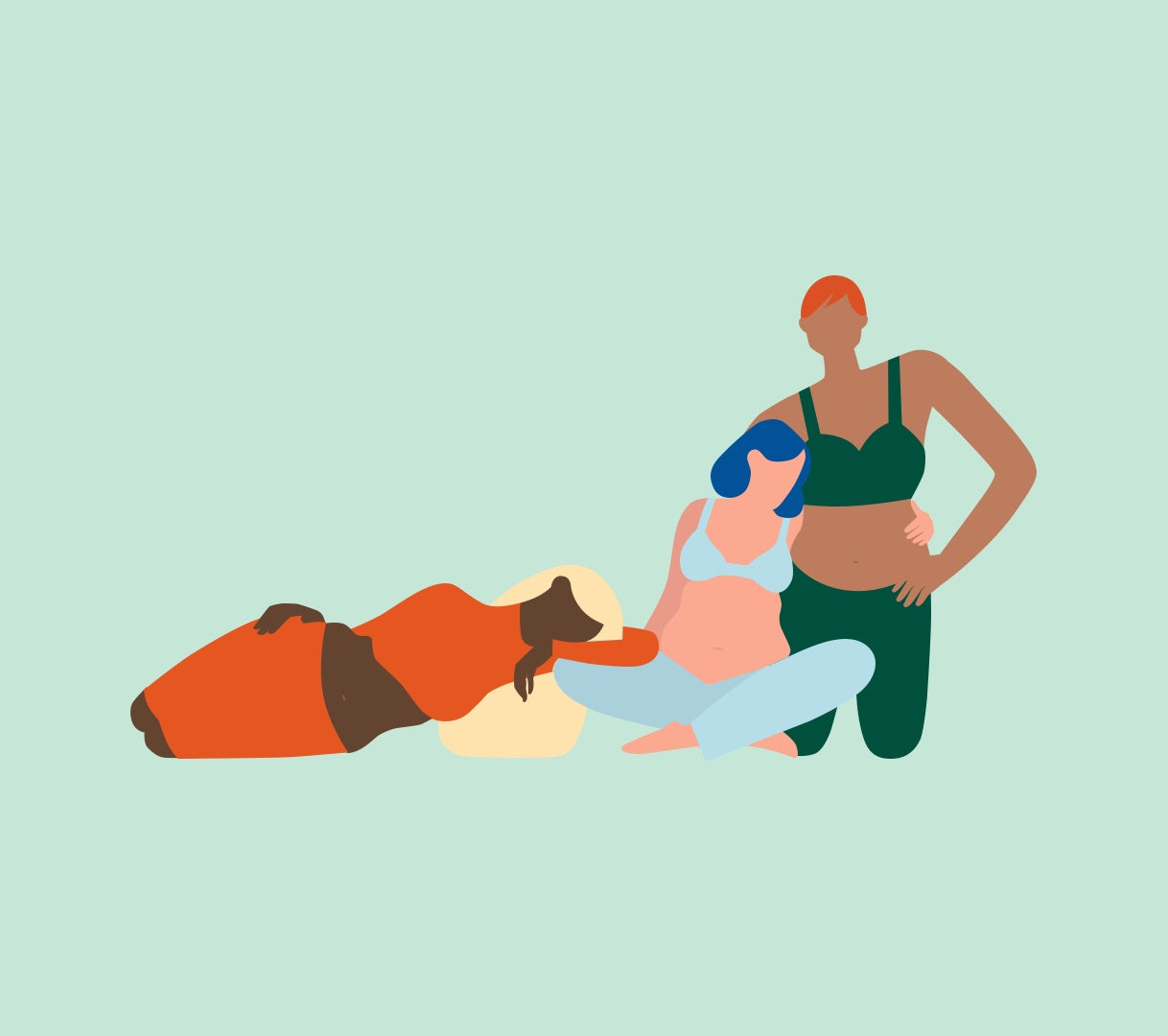Bodily does not provide medical advice, diagnosis, or treatment. The resources on our website are provided for informational purposes only. You should always consult with a healthcare professional regarding any medical diagnoses or treatment options.
What is it?
Our cultural obsession with “snapping back” after pregnancy obscures the fact that what people really need to focus on after birth is recovery. Think about it: Your postpartum body has just spent up to 40 weeks growing a small human — and adjusting to the weight gain that goes along with that — it's been through a lot. Your skeleton changed shape (hips rotating, rib cage expanding), your skin expanded dramatically, and your abdominal muscles separated to accommodate a uterus which grew to 500 times its pre-pregnancy size! Expecting your body to look the same as it did before pregnancy is simply unreasonable. Here’s what you need to know about your bodily changes — and how you can make rest and recovery a priority.
What to expect
Many people report leaving the hospital feeling like they still look five months pregnant; it’s an awkward time when you don’t fit into your pre-pregnancy clothes, but your maternity clothes aren’t quite right, either.
How long does it last?
There’s no set timetable and everyone’s recovery is different. The body is commonly considered physiologically recovered from pregnancy after about nine months.
Most people experience swelling (edema)
Even though you’re no longer carrying the weight of the baby, placenta and amniotic fluid, it’s common to experience swelling after birth. Water retention related to pregnancy, having had surgery, delivering a baby and placenta, and hormonal changes all factor into the swelling. Epidurals can also cause temporary edema. Because kidney output increases after delivery, much of this fluid will be excreted in urine during the first week after delivery, though your feet, hands and face may still be swollen. You’ll also retain the extra fat cells you developed to support the growing baby.
The uterus takes 8 to 12 weeks to shrink back
During pregnancy, your uterus expands about 500 times from its original size — that of a pear. The cramps you experience after delivery are a sign that the uterus is contracting back to its pre-pregnancy size, a process that takes about six weeks, whether you’ve had a vaginal delivery or cesarean birth. With the buildup of blood and tissue in the lining, your uterus also grows about two-pounds heavier. Postpartum discharge of this material (lochia, which is quite bloody at first, then more watery) tapers off and generally stops within a month, though about 15% of women experience discharge for up to eight weeks.
The abdominal muscles take weeks to months to recover
To accommodate growth, your abdominal muscles (rectus abdominis) stretch during pregnancy. Your abdomen will feel flaccid after delivery, but your muscles will regain most of their tone in several weeks. The rectus abdominis also separates to make room for your expanding uterus. The muscle usually comes back together, but if you have diastasis recti, the muscle remains separated for months or sometimes permanently, causing a slight abdominal protrusion that can look like you’re “a little bit pregnant.” You might notice the protrusion especially when you’re contracting your abdominal muscles while doing crunches (which can exacerbate diastasis recti and are not recommended) or even just lifting your head when you’re lying down. If you suspect that you might have diastasis recti, it is important to see a physical therapist or doctor — treating it early can prevent back pain you may otherwise experience down the road.
Getting back to your pre-pregnancy weight may take time
On average, women who gained the recommended amount of weight for their Body Mass Index (BMI) during pregnancy find that they weigh 2 to 5 pounds more at the one-year postpartum mark than they did before becoming pregnant. Those who gained more than the recommended amount may be 10 to 20 pounds heavier than they were before pregnancy.
For some, skin shrinks back over time; for others, it doesn't
The elastic fibers of connective tissue in your abdomen also stretch and may rupture as the baby grows. If rupturing is extensive, abdominal skin may remain lax. Stretching of the skin during pregnancy may also leave you with stretch marks (striae gravidarum), which fade from red to silver over time, but, unfortunately, never totally disappear.
What can I do about it?
Set realistic expectations. It’s almost laughable to think, after the dramatic changes that occur in pregnancy and childbirth, that you’ll quickly return to your old self. Be kind to your body. Though cravings for quick hits of energy-lifting snacks are common, eating nourishing foods — especially protein, complex carbohydrates (whole grains) and high-potassium foods — will sustain you more. To help reduce edema, increase water intake, stay away from salty foods and elevate your feet throughout the day. Walking and other gentle exercise will help restore your body, but more vigorous workouts should wait for medical approval.
When should I be worried?
Check in with your doctor or midwife if you have:
- Severe pain in your lower belly
- Swelling (edema) on one side only, or a swollen area that is tender or red
- Moderate to severe edema with increasing headaches
- Swelling that increases over time
- Vaginal discharge that becomes heavier or brighter red
- Fever higher than 100.4 degrees




-v1742236544033.jpg?830x1020)


